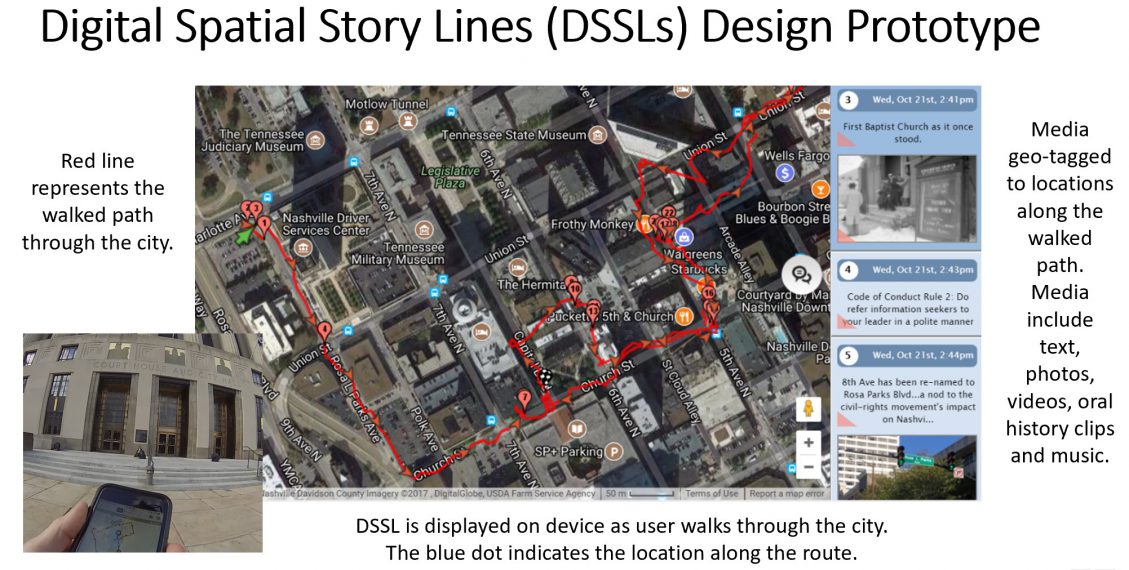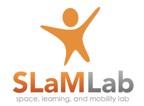Digital Spatial Story Lines (DSSLs) are a way to leverage emerging geo-spatial technologies to support learning about public history in ways that blend work in the learning sciences and social studies (Resor, 2010; Sakr, Jewitt, & Price, 2016). Digital mobile technology can be a powerful tool allowing users to take objects, such as archival media, and view them in the historical locations those media could be linked to spatially, temporally, or narratively (Mulholland, Collins & Zdrahal, 2004; Refsland, Tuters & Cooley, 2007; Procyk & Neustaedter, 2014).
The DSSL framework seeks to build on the potential of digital technology to support storytelling activities. Digital storytelling combines the art of storytelling with digital multimedia sources, such as images, audio and video to engage, inform, and educate new generations of students (Robin, 2006).

The theoretical framework is taken from recent research surrounding the role of story and narrative in history education. Historical narratives serve as representations of the past which are passed on for different purposes (Van Alphen & Carretero, 2015). As people hear aspects of history repeated, these become incorporated into master or schematic narratives which may foster a perception of an idealized past as connected to the present (Carretero & Van Alphen, 2014). If master narratives are the dominant historical stories which are students are exposed to in school, then this may limit students’ access to alternative historical perspectives or historical counter narrative about the same event. Taking the purpose of history education to be identity construction and the development of critical historical thinking skills (Wineburg, 1991), learning to think historically might be difficult for students who have only interacted with master narratives as they have acquired biased conceptions about the past (Van Alphen & Carretero, 2015; Carretero & Van Alphen, 2014).
The DSSL framework positions students to be the authors of counternarratives which talk back to the more dominant tellings of history they may previously have encountered (Solorzano & Yasso, 2002; Taylor & Hall, 2017). Equipping students with the substantive knowledge and conceptual tools which challenge their preexisting schematic narratives may enable them to develop a more sophisticated understanding of history and their place in the historical present (Wills, 2011; O’Neill, Guloy & Sensoy, 2014 ).
For more information on the DSSL Activity Sequence, click here.

Bridging Learning in Urban Extended Spaces (BLUES) 2.0 is funded by an NSF Cyberlearning: EAGER Grant #1623690
